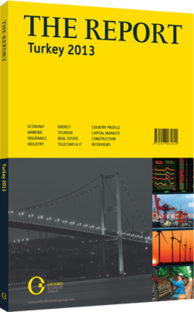Ready for business: Plans are under way for a new financial centre and more malls
While much attention has been given to Turkey’s residential projects, especially those falling under its urban transformation plan, the office and retail markets are also displaying increased sophistication. The announcement of the Istanbul Financial Centre (IFC), which aims to create a business district on the Asian side, is sparking investment in offices and mixed-use complexes.
Istanbul has seen a rapid increase in its office inventory in recent years, but low vacancy rates indicate that demand for space is keeping pace or better. Total leasable area, inside and outside of the central business district, doubled from 2005 to 2011, rising from around 1.66m sq metres to 3.41m sq metres. Vacancy rates for Grade A stock, meanwhile, are around 9.4%, and even lower for the central business districts of Levent, Maslak and Şişli on the European side, at around 4.5%. The total volume of Grade A stock will increase drastically in the next several years, with Jones Lang LaSalle estimating the pipeline at 1.4m sq metres, compared to 3.1m metres in the end of 2012.
Changing Sides
The largest portion of the new supply, 36%, will go to Ataşehir on the Asian side, the core of a rapidly emerging alternate central business district. The district will host the IFC, a 4.18m-sq-metre development that was announced as one of Prime Minister Recep Tayyip Erdoğan’s key Vision 2023 goals. The master plan, designed by US architecture and engineering firm HOK, calls for four distinct districts, focusing on culture, commerce, civic functions and governance. Turkey’s government is hoping to eventually make the IFC the headquarters of most of the nation’s finance industry, and has announced plans to relocate its financial and regulatory authorities – the central bank, the Istanbul Stock Exchange, the Banking Regulation and Supervision Agency, and the Capital Markets Board – to Ataşehir when office space opens up. State-owned banks Ziraat Bank, Halkbank and VakıfBank will also be making the move, and foreign banks are reportedly considering a bid for office space in the new complex, although domestic Turkish banks like Yapı Kredi and Garanti have signalled that they will stay put in Levent for now. The $2.6bn project –Turkey’s largest non-transport project in history, reportedly – broke ground in 2013 under contractor Akdeniz Group, and is slated for completion by 2013. The complex will be constructed with environmentally friendly specifications and techniques, helping enlarge a green building sector that has just 20 certified buildings under its belt.
Retail
Local and international retailers have scrambled in recent years to cater to the ever-greater purchasing power of the Turkish consumer. The breakneck expansion of supply shows signs of moderating in the medium term but the volume of investments already committed has guaranteed steady growth for the next several years. According to Jones Lang LaSalle, Turkey has 8.58m sq metres of gross leasable retail space, with 3.46m (40%) of that in Istanbul. And though Istanbul already has a higher than average density of malls – it overtook Ankara to reach 254 sq metres of mall per 1000 inhabitants in 2012 – it is on track to receive nearly 52% of new supply through 2015. The city will see three new malls larger than 100,000 sq metres each, while the largest outside of Istanbul is just 63,000 sq metres. In total, projects under construction will expand the supply of retail space by 31% by 2015, to 11.24m sq metres across 410 shopping malls. While this has the potential to increase vacancy rates, developers are counting on a bias towards modern locations, which tend to pull shoppers away from unrenovated malls.
Ahead
Future investments will depend on a number of factors, including the availability of prime real estate in central locations and overall consumer sentiment. This latter point relies on broad economic growth and has been mixed in recent months, falling from nearly 85% in July 2011 to 70% by October 2012, but rising again to 76% by January 2013.
However, foreign investors clearly like the potential of an emerging consumer class in a growing economy that is located close to Europe, which has been seen through predictions of more transactions to come.
You have reached the limit of premium articles you can view for free.
Choose from the options below to purchase print or digital editions of our Reports. You can also purchase a website subscription giving you unlimited access to all of our Reports online for 12 months.
If you have already purchased this Report or have a website subscription, please login to continue.

